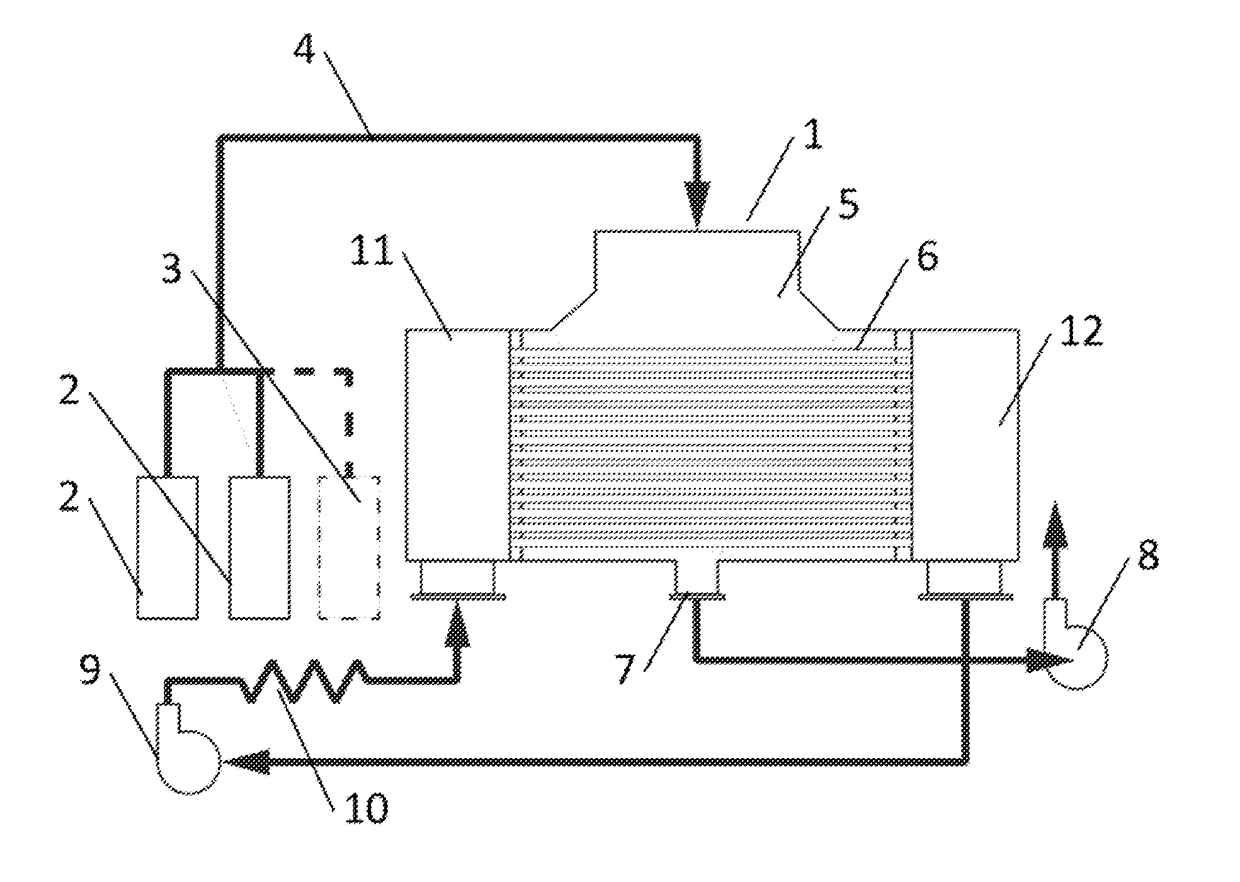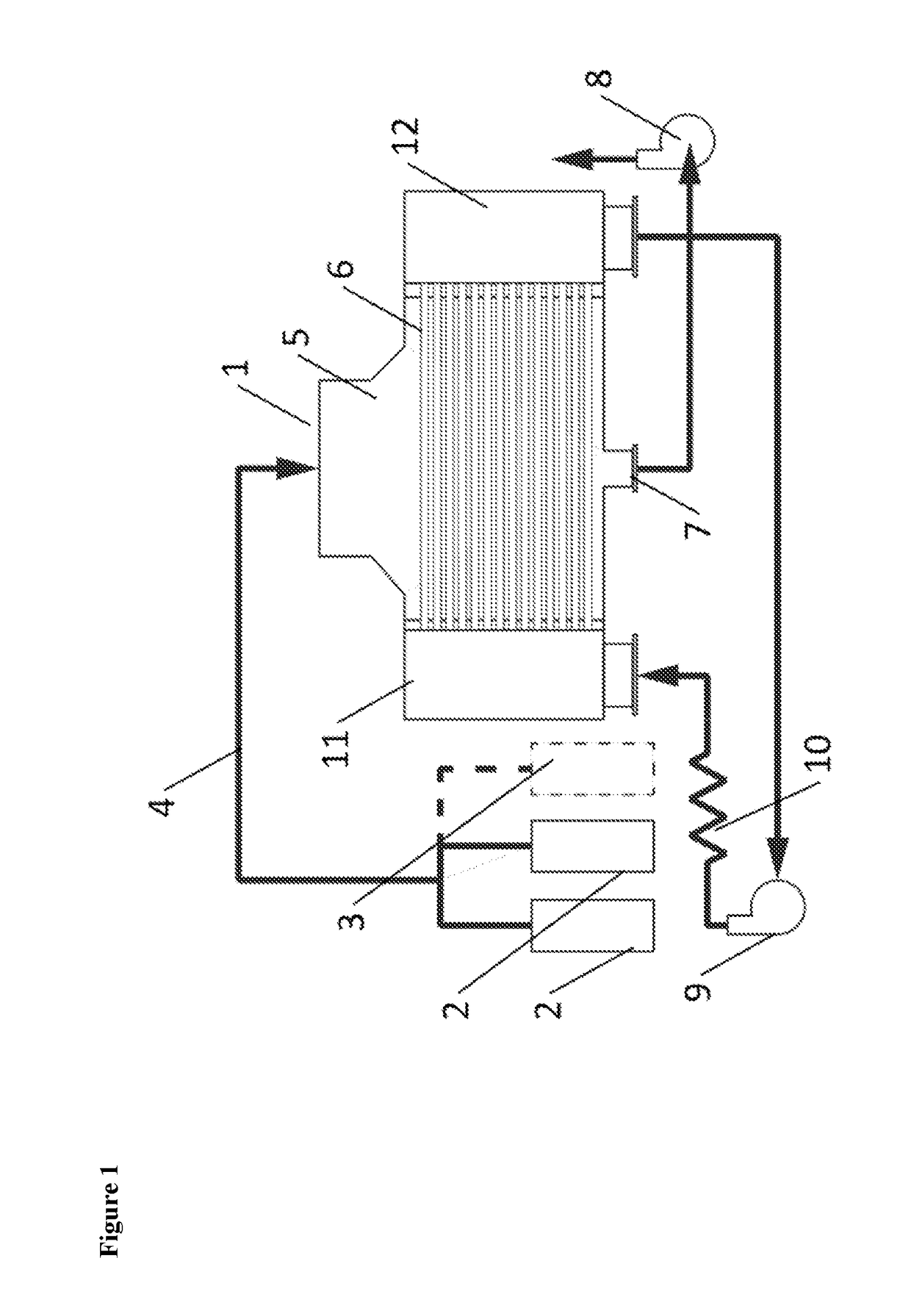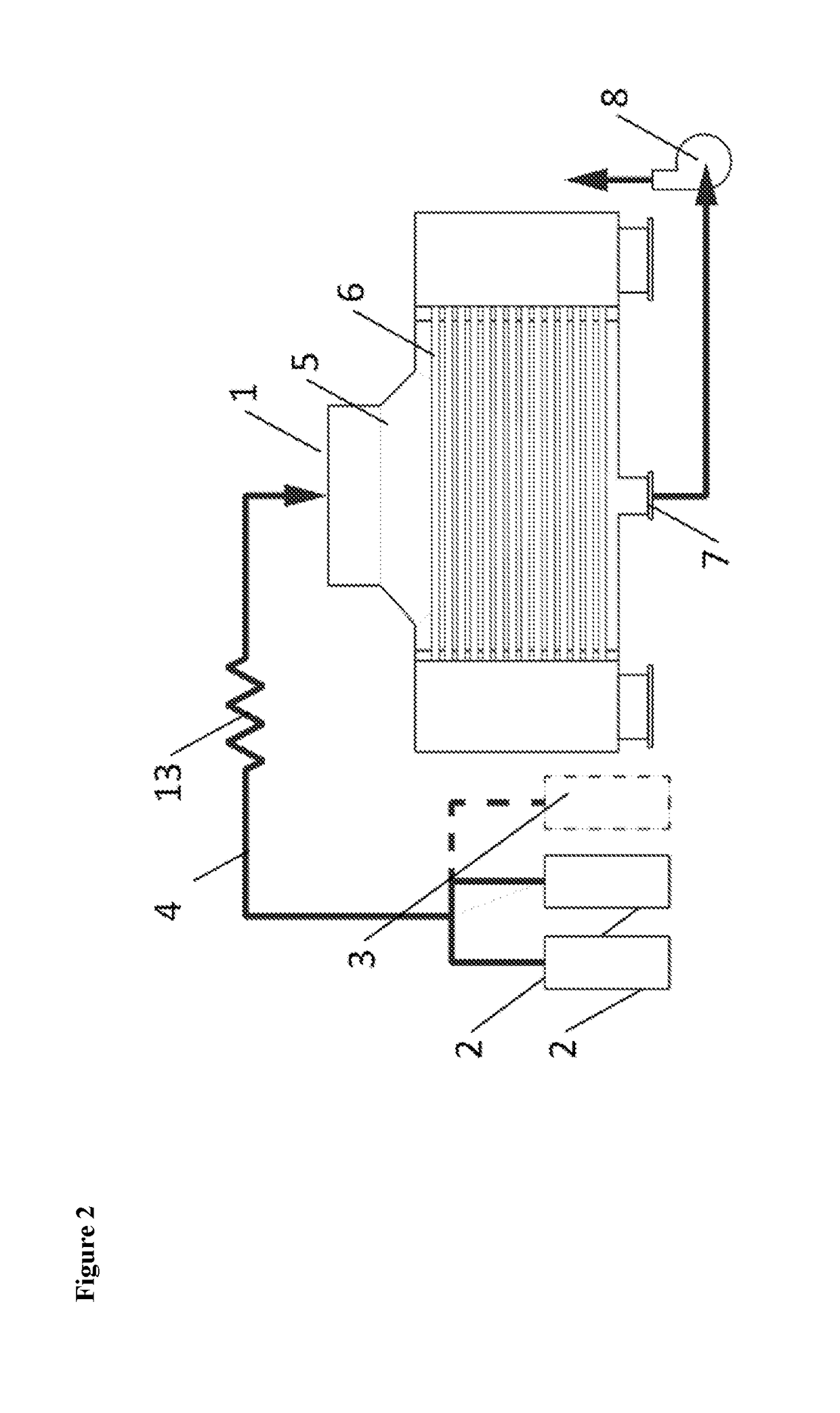Methods for the vapor phase deposition of polymer thin films
a technology of vapor phase and polymer, which is applied in the direction of liquid surface applicators, coatings, special surfaces, etc., can solve the problems of destroying the functionality imparted by roughness, limiting heat transfer, and needing to provide a heated filament adjacent to the substra
- Summary
- Abstract
- Description
- Claims
- Application Information
AI Technical Summary
Benefits of technology
Problems solved by technology
Method used
Image
Examples
example 1
Deposition Activated by a Heated Reactor Body
[0099]A polymeric coating was deposited onto a piece of silicon without the use of filaments. The deposition was carried out in a vacuum chamber in which the surface temperatures were controlled. The chamber was evacuated down to a base pressure of less than 0.05 Torr. All reactor chamber walls and surfaces were heated to around 150° C. The substrate surface was held at a temperature of about 35° C. Divinylbenzene (DVB) was used as the monomer, and preheated in a glass jar outside the reactor to 80° C. An inhibitor, 4-hydroxy TEMPO, was used to minimize self-polymerization of the DVB in the glass jar. A free radical initiator, di-tert-butylperoxide (TBPO), was also used. DVB and TBPO were flowed into the chamber through heated lines at 0.6 and 3.8 sccm, respectively. The throttle valve, which exhausts to the pump, was used to maintain the chamber pressure at 1.75 Torr. The reaction was allowed to proceed for 105 minutes. After this time, ...
example 2
Deposition Activated by Heated Substrate (Prophetic)
[0100]This example outlines an experiment to deposit a polymer coating without the use of filaments. The deposition is carried out in a vacuum chamber in which surface temperatures are controlled. The chamber is evacuated down to a base pressure of less than 0.05 Torr. The target surface within the chamber is heated to a temperature of 120° C. All other chamber walls and surfaces are heated to around 70° C. Divinylbenzene (DVB) is used as the monomer and heated in a glass jar outside the reactor to 80° C. An inhibitor is used to minimize the self-polymerization of the DVB in the glass jar. DVB is flowed into the vacuum chamber through heated lines. The throttle valve, which exhausts to the pump, is closed, and the chamber pressure increases due to DVB flow into the chamber. Once the pressure reaches 3 Torr, the DVB flow is stopped. A low-temperature free radical initiator, such as tert-butylperoxybenzoate (TBPOB), is then be delive...
example 3
Deposition Activated by Heated Lines
[0101]This example outlines an experiment to deposit a polymer coating without the use of filaments. In this Example, polymerizations were conducted in a cylindrical vacuum chamber (described in Im, S.; Gleason. K.; Macromolecules, 2007, 40, 6552-6556). Heat tape (Omega Engineering) was used to heat the desired surfaces on the air side. The reactor body was maintained at 70° C., which was well below the activation temperature of the materials used. The target surface within the chamber was a Si wafer held to an inverted stage that was back-cooled at a temperature of ˜25° C. using a recirculating chiller (VWR). Reactor pressure was maintained at 2 Torr using a throttle valve (MKS Instruments). Di-tert-butylperoxide (TBPO) was used as the radical initiator and divinylbenzene (DVB) was used as the monomer. The TBPO was held in an unheated glass jar outside the reactor, and delivered to the chamber through lines heated at 180° C. and at a flowrate of ...
PUM
| Property | Measurement | Unit |
|---|---|---|
| Temperature | aaaaa | aaaaa |
| Temperature | aaaaa | aaaaa |
| Temperature | aaaaa | aaaaa |
Abstract
Description
Claims
Application Information
 Login to View More
Login to View More - R&D
- Intellectual Property
- Life Sciences
- Materials
- Tech Scout
- Unparalleled Data Quality
- Higher Quality Content
- 60% Fewer Hallucinations
Browse by: Latest US Patents, China's latest patents, Technical Efficacy Thesaurus, Application Domain, Technology Topic, Popular Technical Reports.
© 2025 PatSnap. All rights reserved.Legal|Privacy policy|Modern Slavery Act Transparency Statement|Sitemap|About US| Contact US: help@patsnap.com



